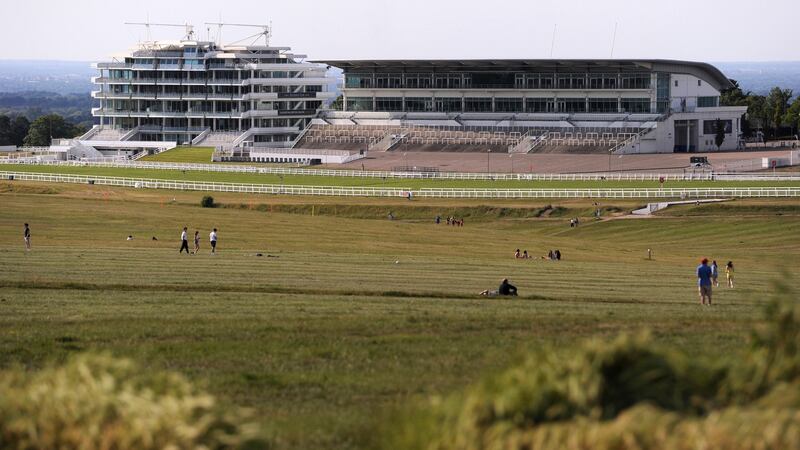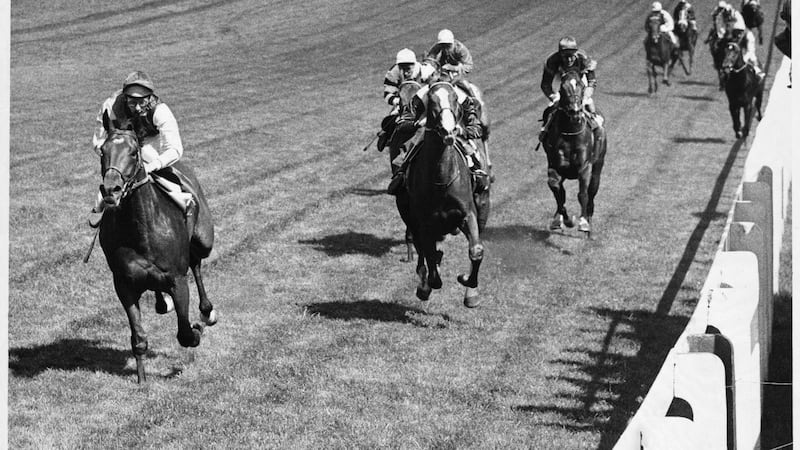Racing has provoked its share of extravagant assertions down the centuries but perhaps none more repeated than Federico Tesio’s line about the Epsom Derby.
The Italian owner-trainer-breeder, one of the most accomplished horseman of the first half of the last century, was unequivocal.
“The thoroughbred exists because its selection has depended not on experts, technicians or zoologists but on a piece of wood: the winning post of the Epsom Derby. If you base your criteria on anything else, you will get something else, not the thoroughbred,” he grandly maintained.
It’s a line turned hoary by time and is perhaps a little flimsy under microscopic inspection too. But to those of us in thrall to the sight and idea of the galloping racehorse it still resonates with a wonderful grandeur. It’s racing as romance and history on the hoof.
That Epsom, a mostly unlovely piece of suburbia less than 20 miles from central London, should host something so evocative isn’t the Derby’s most contradictory element.
After all no one confuses Churchill Downs, the old Kentucky home of the great race’s most famous imitator, with something beautiful either.
But even when Samuel Pepys was referencing racing at Epsom in 1663, the wildly undulating piece of Surrey common must have been hard to reconcile with any conventional idea of a racecourse.
Not an inch of it is level. Never is a horse not climbing, descending, turning or working to stay balanced. Even the straight after the sweep around Tattenham Corner is wonky with a famous camber tumbling towards the running rail.
There are those who'd be hard-pushed to pin down their child's birth but can give the year and its Derby winner in a heartbeat
Many the relieved horse and jockey have got to that famous piece of wood at the end oblivious to victory or defeat but simply hoping for a brake-run.
Yet it is precisely the demands on balance, athleticism and grit which makes it the supreme test of a thoroughbred.
Fairer test
The wide open expanses of Newmarket or the Curragh provide a fairer test. But whether by method or madness the race most coveted over centuries has mostly been run over the greatest test of all.
Exceptions were during the war years when the Derby, and its fillies equivalent, the Oaks, were run at Newmarket.
The asterisks that resulted meant the task of fencing off the entire common to the public in order to run the races behind closed doors due to coronavrius earlier this month was done without hesitation. Epsom and the Derby are a package, one that comes wrapped in history.
There are those who’d be hard-pushed to pin down their child’s birth but can give the year and its Derby winner in a heartbeat. It used to be something of a party piece for a young yours truly as curiosity about the old game turned into fascination.

Just as 1970 will always be the year of Nijinsky’s supreme style, then replays of El Gran Senor’s infamous defeat to Secreto in 1984 still sting. It’s probably why Sea The Stars’ victory 25 years later mattered much more than it should have.
It is tradition that makes Epsom and the Derby special. The crooked, sloping helter-skelter mile and a half takes only about two and a half minutes for the winner to run. Its significance is stamped all over two and a half centuries of the breed.
What immediately struck, and which is never fully captured by the cameras, is how steep the uphill climb from the start is
Other greats of the game such as Sea Bird, Nijinsky and Mill Reef proved their class around here. Comparatively ordinary talents proved great enough for long enough to win on the day that counts most.
Benny The Dip was one of them in 1997, appropriately pinching the race from the front and holding off the ultimately more substantial talents of Silver Patriarch. It was earlier that day when I led from the front myself, a media pass permitting a first solo walk of the track.
It would be bullshit to try and pass it off as some Camino-like pilgrimage to sacred turf and yet also a cop-out to pass it off as trivial. Previously just seen on telly, as perks of the gig go, being allowed wheeze around the same ground on which Shergar strode to glory in 1981 was a rare one.
What immediately struck, and which is never fully captured by the cameras, is how steep the uphill climb from the start is. It rises by 134 feet in five furlongs. Then as the long u-shaped track starts to turn it also sharply descends.
Other tracks are just as steep. The drop in Tramore isn’t for the faint-hearted. Neither is Clonmel. But with due respect they don’t have the world’s best thoroughbreds careering towards Tattenham Corner and the spot where Emily Davison threw herself under the King’s horse in 1913.
On that maiden trek I could pinpoint almost to the metre The Minstrel’s position at this point in 1977 when Lester Piggott reacted quickest to how Hot Grove and Willie Carson were the ones to beat.
Or how it was here where Pat Eddery veered Golden Fleece to the outside in 1982 and passed most of the field in a furlong. Eight years later Eddery had Quest For Fame in the perfect cat-bird seat by then, waiting to pounce on the leaders.
Slip Anchor had long gone by then in 1985, the famed Steve Cauthen acclaimed for setting the sort of fractions in front that the relatively unknown Emmet McNamara replicated so dramatically earlier this month on the outsider Serpentine.
Aidan O’Brien’s eighth Derby winner angled down a straight bare of atmosphere but which is normally a half mile shoot of green grass bisecting a heaving mass of raucous humanity on either side of it.
Walking at a tilt down the straight it’s not hard to see why the subsequently great sire Lypahrd took one look at it in 1972 and left Roberto and Rhinegold to fight out the finish. His desperate jockey Freddy Head’s sudden task was to stop him disappearing into Epsom town.

For immature three-year-olds mostly running a mile and a half for the first time, having to try and gallop straight when gravity is impelling you downwards is a test at any time. Doing while so being asked for the utmost separates the champions. That includes those on their backs.
Through the 1870s and 80s, Fred Archer, the ‘Tin Man,’ won the Derby on five occasions and the Oaks four times. He did all that by the age of just 29 when illness and constant wasting prompted his suicide.
Depth of affection
The Derby became an obsession to racing’s next great figure of the saddle, Gordon Richards, 26 times champion jockey, winner of nearly 5,000 races but not the one that mattered most. Twenty seven times he failed. By 1953 Richards’ obsession was shared by millions willing him to do it.
Pinza was his final Derby ride. The depth of affection for the jockey meant that Richards and Pinza could beat the newly crowned Queen Elizabeth II’s runner Aureole by four lengths and still be embraced as heroes.
Talk of stepping in the hoof-prints of history is mawkishness that gets laughed out of court
Popularity never mattered much to Epsom’s ultimate maestro. Lester Piggott changed the nature of what it was to be a top-class jockey. Never has the idea of doffing any sort of cap appeared such an alien concept to anyone. And at the root of the Piggott legend is those nine Derby wins.
I walked Aintree a couple of times over the years, peeped over the top of Bechers Brook and pondered the pluck required by horse and jockey to tackle the Grand National. Better them than me, I thought. But every Derby I’ve attended began by walking that famous mile and a half.
There’s a danger in veering towards the fanciful with this stuff. For instance talk of stepping in the hoof-prints of history is mawkishness that gets laughed out of court. But it’s a poor game that can’t indulge a little sentimentality sometimes, especially one so rooted in selling frivolous dreams of glory.
So when even flint-minded professionals like Tesio succumb to the Derby’s romance then it’s surely only the witless who can pretend that Epsom’s mile and a half is just another piece of turf. It is turf history.






















